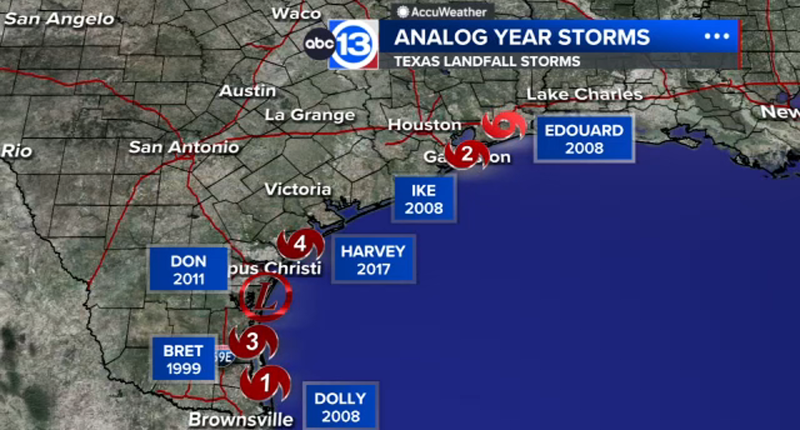Share this @internewscast.com
The countdown is on for the start of the 2025 Atlantic Hurricane season, which begins on June 1 and lasts through the end of November.
Following a record-breaking season on the Gulf Coast in 2024, highlighted by Hurricane Beryl’s landfall in southeast Texas, ABC13 Meteorologist Elyse Smith provides an outlook on what to expect this year.
This hurricane season is expected to be ENSO neutral, often referred to as “La Nada,” instead of El Niño or La Niña. This indicates that the Trade Winds over the Atlantic remain in their typical position and strength. Unlike El Niño or La Niña, there’s no significant impact on jet stream patterns or ocean temperatures. As always, ocean temperatures will play a crucial role, since warmer waters increase the chances of storm formation and intensification.
Storm formation is also tied to the West African Monsoon, which sends clusters of thunderstorms into the Atlantic that can evolve into tropical systems. The presence of Saharan Dust, usually early in the season, can inhibit this development. For storms potentially impacting southeast Texas, both local weather patterns and those in the Caribbean remain crucial. If the jet stream moves over the Gulf, it can lead to increased wind shear, which may weaken tropical systems.
That said, the 2025 Atlantic hurricane season could be an active one with above-normal activity across the tropics. While the 2025 outlook from NOAA is set to be released this Thursday, researchers with Colorado State University released theirs last month. It also reflects the above normal prediction, calling for 17 tropical storms, nine becoming hurricanes, and four potential major hurricanes.
Another way to preview an upcoming hurricane season is through analog years. These are past years which, based on similar atmospheric conditions, could be comparable to what this season might look like. Dr. Phil Klotzbach with Colorado State University told ABC13 Meteorologist Elyse Smith that these years are 1996, 1999, 2006, 2008, 2011, and 2017.
Some of these years will stand out to Texans, and for good reason: 2008 for Hurricane Ike and 2017 for Harvey. However, consider 2006 and 1999, which were very different seasons for the Texas coast. 2006 was a slightly below normal year in terms of the number of storms, and no hurricanes made landfall in the U.S. Tropical storms did hit Florida that year. 2011 was active for the Atlantic and Bay of Campeche, but not necessarily the Gulf.
One thing worth mentioning, we don’t know how the recent cuts to NOAA will impact operations during hurricane season. While outlooks and forecasts will still be issued in a timely and accurate manner, one curveball could be associated with the hurricane hunters, the possibility of or frequency of their flights, and any research planned to occur during this hurricane season.
For more on this story, follow Elyse Smith on Facebook, X and Instagram.
Copyright © 2025 KTRK-TV. All Rights Reserved.
















